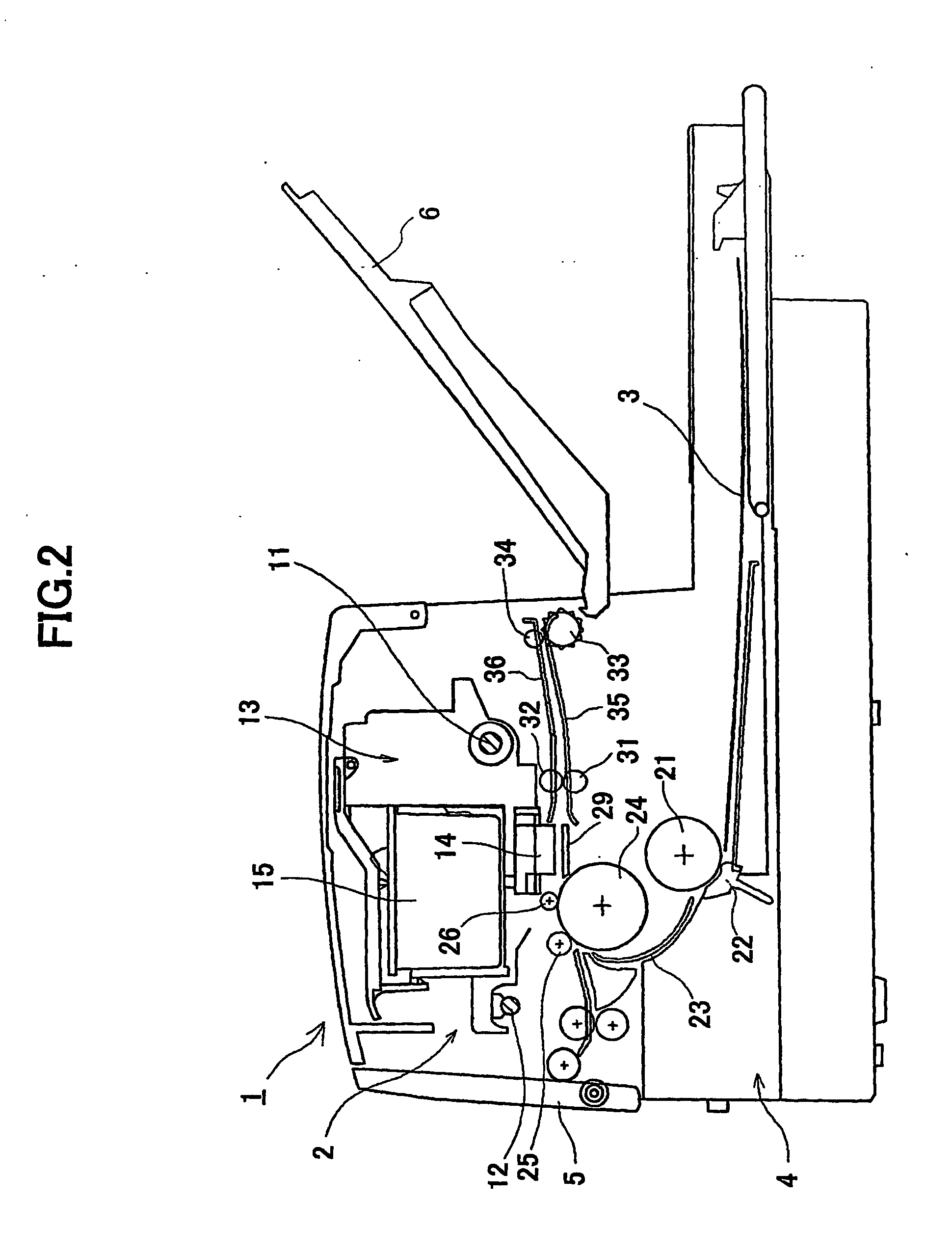Image formation apparatus
a technology of image formation and nozzle, which is applied in the direction of printing, inking apparatus, other printing apparatus, etc., can solve the problems of slowing down the printing speed, reducing the nozzle pitch, and not being able to fully print the area, and achieves high speed and stably carried out
- Summary
- Abstract
- Description
- Claims
- Application Information
AI Technical Summary
Benefits of technology
Problems solved by technology
Method used
Image
Examples
first embodiment
[0113] the time interval (discharge interval) between a first ink drop discharged by the first drive pulse P1 and a second ink drop discharged by the second drive pulse P2 is set at 1.5×Tc, the time interval (discharge interval) between the second ink drop discharged by the second drive pulse P2 and a third ink drop discharged by the third drive pulse P3 is set at 1.5×Tc, and the time interval (discharge interval) between the third ink drop discharged by the third drive pulse P3 and a fourth ink drop discharged by the fourth drive pulse P4 is set at 2×Tc. Here, Tc represents the specific vibration cycle of the pressurized ink chamber 46.
[0114] For comparison, a first comparative example is provided. The drive pulse of the first comparative example is as shown in FIG. 8. The first comparative example includes a drive pulse P101, a drive pulse P102, and 4 drive pulse P103 that are output serially in time. These drive pulses make the pressurized ink chamber 46 contract at the pulse ri...
third embodiment
[0142] According to the drive pulse of the third embodiment, the third ink drop is discharged at an interval nearly equal to 1.5 Tc after the second ink drop, the third ink drop canceling out the residual pressure vibration.
[0143] Next, the drive pulse of the fourth embodiment is explained with reference to FIG. 22. According to the drive pulse of the fourth embodiment, the interval between the first ink drop discharged by the drive pulse P1 and the second ink drop discharged by the drive pulse P2 is set to 2.5 Tc (i.e., n=2), the interval between the second ink drop discharged by the drive pulse P2 and the third ink drop discharged by the drive pulse P3 is set to 2 Tc, and the interval between the third ink drop discharged by the drive pulse P3 and the fourth ink drop discharged by the drive pulse P4 is set to 2 Tc. Here, the head structure is the same as that of the first embodiment.
[0144] In this drive pulse, the second ink drop is discharged at an interval nearly equal to 2.5 T...
fifth embodiment
[0148] In the fifth embodiment, the interval between the first ink drop discharged by the drive pulse P1 and the second ink drop discharged by the drive pulse P2 is set to 1.5 Tc, the interval between the second ink drop discharged by the drive pulse P2 and the third ink drop discharged by the drive pulse P3 is set to 2 Tc, and the interval between third ink drop discharged by the drive pulse P3 and the fourth ink drop discharged by the drive pulse P4 is set to 2 Tc.
[0149] In this drive pulse sequence, the second ink drop is discharged at an interval nearly equal to 1.5 Tc after the first ink drop, the second ink drop canceling out the residual pressure vibration.
[0150] The “pull and strike” has pros and cons. Drawbacks include the first ink drop becoming small due to the meniscus being once drawn back when the pressurized ink chamber is expanded, and there being difficulties in controlling because change of ink drop speed to voltage change is great (i.e., inclination of the voltag...
PUM
 Login to View More
Login to View More Abstract
Description
Claims
Application Information
 Login to View More
Login to View More - R&D
- Intellectual Property
- Life Sciences
- Materials
- Tech Scout
- Unparalleled Data Quality
- Higher Quality Content
- 60% Fewer Hallucinations
Browse by: Latest US Patents, China's latest patents, Technical Efficacy Thesaurus, Application Domain, Technology Topic, Popular Technical Reports.
© 2025 PatSnap. All rights reserved.Legal|Privacy policy|Modern Slavery Act Transparency Statement|Sitemap|About US| Contact US: help@patsnap.com



